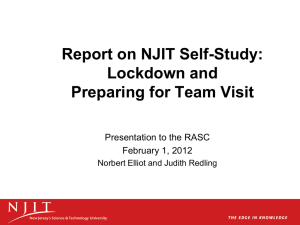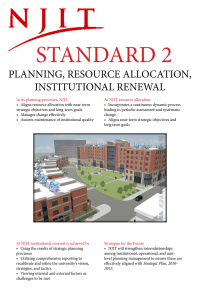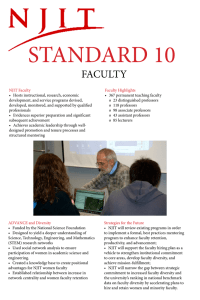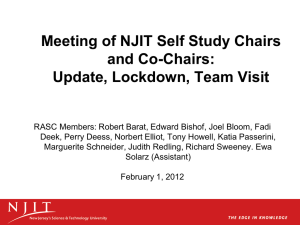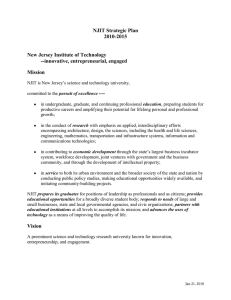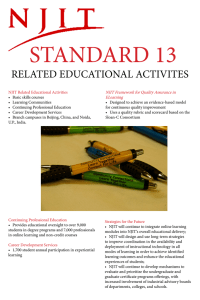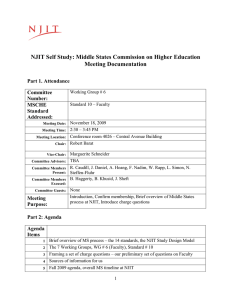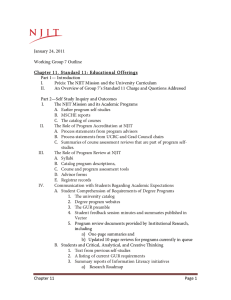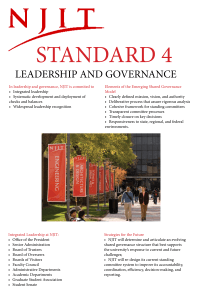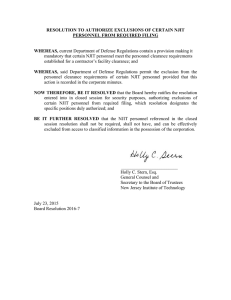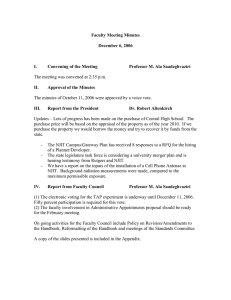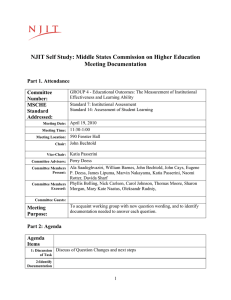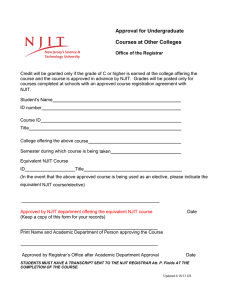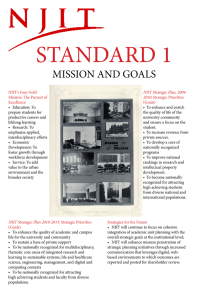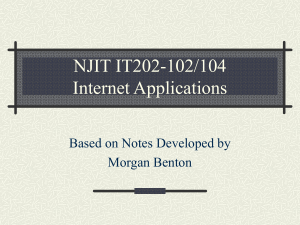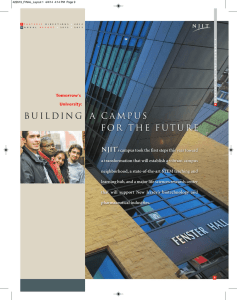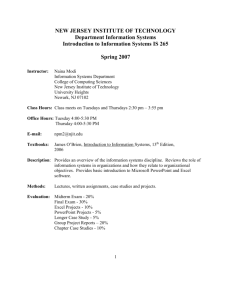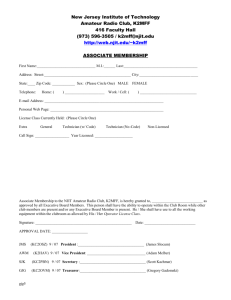Middle States Commission on Higher Education: NJIT Self Study
advertisement
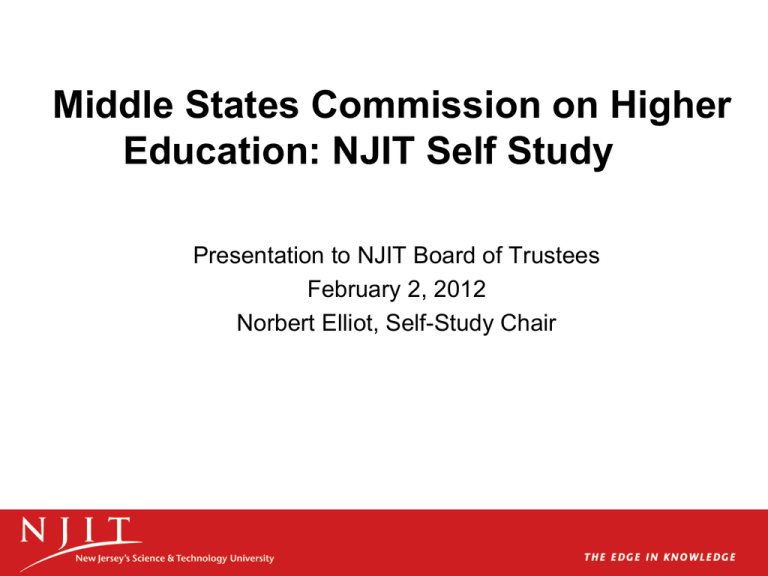
Middle States Commission on Higher Education: NJIT Self Study Presentation to NJIT Board of Trustees February 2, 2012 Norbert Elliot, Self-Study Chair A Science and Technology Research University for the 21st Century From November 5, 2000 to February 2, 2012 • Benefits of study design – Documented evidence of mission articulation from 2002 to 2011 – Constructed model for present institutional change – Established systems of sustainability for future directions The Timeline: Fall 2009 through Spring 2012 • Initiation: Fall 2009Spring 2010 • Organization: Fall 2010Spring 2011 • Delivery: Fall 2011Spring 2012 Lockdown: February 12, 2012 Team Visit: April 1-4, 2012 Overview: The Final Report • Characteristics of Excellence – Institutional Context • Standards 1-6 – Educational Effectiveness • Standards 7-14 Highlights: Institutional Resources • Mission resonates with State • Administrative structures and services designed to fulfill the Strategic Plan university’s mission of • Resource allocation and instruction, research, economic associated expenditures total development, and service. $101.5M • Policies and procedures • Although state support has designed to ensure integrity in declined, institutional faculty selection, promotion, resources of tuition and fee tenure, retention, compensation, revenue has increased by and administrative review $57M (88%) since 2002 • Institutional assessment • Leadership and governance achieved through Strategic assured by comprehensive Plan, 2004-2010 and the and articulated strategies for Strategic Plan, 2010-2015 checks and balances among shareholders Highlights: Educational Effectiveness • Student admission reveals the largest enrollment in history (9,558 in fall of 2011) without variation in academic standards • Student support services designed to enhance engagement and sustain enrollment • Faculty and instructional staff of extraordinarily high caliber sustainable through Phase I and Phase 2 of hiring plan • Educational mission achieved through 124 monitored degree programs (49 undergraduate degrees, 56 master’s degrees, and 20 doctoral degrees) • Related educational activities allow increased engagement through undergraduate research and learning communities • Varied, exemplary, and unique, hallmark assessment practices of student learning Challenges: Identification of Barriers • • • • Mission: Meet challenges of level of state funding, rapidly changing professional landscape, new student demographics, and emerging political currents Resource allocation: Strengthen interrelationships among institutional, operational, and unitlevel planning goals Institutional resources: Increase awareness of processes associated with tracking, monitoring, and reporting budget allocations that impact human resources, technological resources, and facilities Leadership: Continue shared governance initiative • • • • • Institutional Assessment: Deepen use of benchmark universities Retention: Increase first-year retention and graduation rate through attention to a common first-year experience and GUR delivery Student Support Services: Integrate into academic programs Faculty: Ensure success with Phase I of hiring plan; advance women faculty and instructional staff Student Learning Assessment: Deploy the existing model and strengthening the culture of measurement and accountability Resolution: Capacity of Design • Assessment of institutional context and educational effectiveness demonstrates that NJIT has in place the systems necessary to ensure mission articulation. • Through its mission of service, education, research, and economic development, NJIT has focused its policies and investments on vibrant activities that preserve the New Jersey’s critical resources.

